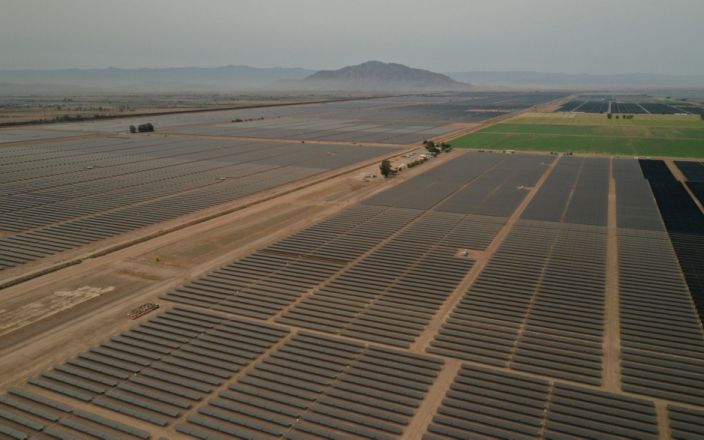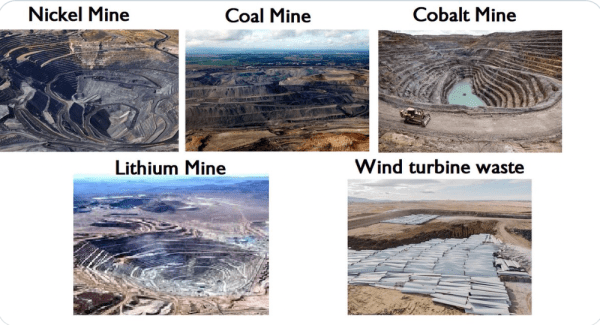In the fantasy land occupied by green dreamers, the wind is always blowing and the sun is always shining. Not for them the reality of sunset and calm weather. It’s their truth, and they’re sticking with it.
Destabilising grids and power markets, chaotically intermittent and heavily subsidised wind and solar may be beloved of crony capitalists and delusional acolytes, but the households and businesses struggling to make ends meet are less enamoured.
In this crisp little piece, Steven Hayward explains why wind and solar worshippers treat reality with contempt.
Latest from the Dreamworld of Green Energy
Powerline
Steven Hayward
20 February 2022
A core axiom of “green energy” is that it is actually cheaper than fossil fuels, because “the wind and sunlight are free.” The Rocky Mountain Institute argues with a straight face that “the faster the world deploys renewables, the more money we will save in energy costs.” Tell that to Denmark, which generates half its electricity from wind power, but has the second highest electricity rates in Europe. Or California, with its pedal-to-the-(wind and solar)-metal drive for green energy that has delivered retail electricity rates twice as high as neighboring states. In fact I am unaware of any jurisdiction that has deployed a large amount of renewables and experienced a decline in costs. (See Ben Zycher’s copious refutation of this nonsense here.)
The newest drive of the green energy climatistas is to outlaw natural gas appliances and boilers for both residential and commercial buildings. I can just see the good green people of Marin County giving up their Wolf and Viking kitchen ranges and stoves, and then voting like San Franciscans to oust their local politicians who forced this on them. The idea behind this that we should “electrify everything,” because we can generate all the electrons we need with “free” wind and solar.
New Jersey is trying to jump on this bandwagon, with an aggressive plan from their narrowly re-elected Governor Phil Murphy to replace gas boilers in the state with electric boilers and related equipment (HVAC systems, etc). Turns out reality may intrude:
Cost correction draws more criticism for Murphy’s electrification plan
The Department of Environmental Protection, which is mulling new regulations for boiler permits, said in a rule proposal unveiled in December that electric boilers would cost between 4.2% and 4.9% more to operate than their gas counterparts. But a correction issued by the agency Tuesday said running electric boilers would cost between 4.2 and 4.9 times more than their fossil fuel equivalents.
That’s a several orders of magnitude error, which is pretty hard even for a government bureaucracy. Even if you swallow the Biden Administration’s inflated (like everything else) “social cost of carbon” calculations that a federal judge recently blocked, there is no way this proposal can come close to offering benefits in excess of the “costs” of future climate change.
Chaser—a reminder of about how “green” so-called green energy is (I assume the coal mine is included because its footprint is smaller than the mines needed for “green” energy):
Chaser 2:
America’s Power Grid Is Increasingly Unreliable
The U.S. electrical system is becoming less dependable. The problem is likely to get worse before it gets better. Large, sustained outages have occurred with increasing frequency in the U.S. over the past two decades, according to a Wall Street Journal review of federal data. In 2000, there were fewer than two dozen major disruptions, the data shows. In 2020, the number surpassed 180. . .
The historic shift to new sources of energy has created another challenge. A decade ago, coal, nuclear and gas-fired power plants—which can produce power around the clock or fire up when needed—supplied the bulk of the nation’s electricity. Since then, wind and solar farms, whose output depends on weather and time of day, have become some of the most substantial sources of power in the U.S., second only to natural gas.
Grid operators around the country have recently raised concerns that the intermittence of some electricity sources is making it harder for them to balance supply and demand, and could result in more shortages.
You don’t say!
Powerline




A comprehensive model of the main Australian grid estimated the comparative costs of six power mixes including replacing coal with nuclear power and replacing coal and gas with 100% wind, solar and hydro power. The cost of firming 100% RE was included and that boosted the cost of the 100% RE option to more than twice the cheapest of the others.
https://epc.com.au/index.php/nem-model/
See also https://newcatallaxy.blog/2021/09/25/the-real-cost-of-unreliable-energy/
Crude oil is virtually useless, unless it’s manufactured into oil derivatives that are the basis of more than 6,000 products in our daily lives, and the fuels to move the heavy-weight and long-range needs of aircraft, cruise and merchant ships, and the military and space program.
Wind turbines and solar panels may be able to generate intermittent electricity, but they cannot manufacture anything.
Of the 3 fossil fuels of coal, natural gas, and crude oil, where’s the replacement for crude oil, to keep today’s societies and economies running?
We also might keep in mind that electric fueled air conditioning works EFFICIENTLY for Temperature Management (TM) but that is in a small temperature range i.e. to keep a business or home at 78 degrees down from 98 degrees a 20 degree spread WHEREAS heating a business or home with fossil fuels will easily go from below zero to a comfortable enough 72 degrees, a Temperature Management Spread (TMS) that is greater by almost 4 times as much, and if we did this TM with electric heat the cost would also be 4 times as much. So we should ask is that 4.2 to 4.9 times greater cost for the actual RATE we would pay per degree of change or is this a total cost using actual bills that were paid for an entire year in comparison?
Reblogged this on whatyareckon and commented:
Renewables: where the rich get richer and the poor get poorer!